Effigiya Dona Rodrigo Campusano or "the best alabaster armor"
For example, in England, even in the era of Cromwell, ancient statues were not broken, but France in the era of the French Revolution was completely different. The statues were destroyed, the columns were overthrown, the rebel gang was almost cut into pieces "Tapestry from Bayeux" - the most valuable historical monument. Well, revolutionaries needed a piece of cloth to cover the cart with ammunition, so they decided to pull it out of the cathedral, where it was kept, and cut it into pieces. Fortunately, there was a sensible person in Bayeux who was invested with power - the Commissioner of Convent, who managed to dissuade them from this, explaining that this is a memory of the great past of France and has no relation to royal power. But how many effigy were beaten - gravestone sculptures depicting knights in full armor, by which we could judge today how they really looked.

The famous effect of the Black Prince makes it possible with exceptional certainty to recreate the appearance of his knightly equipment, only it is not clear what was under his nalatnaya clothing - Dzhupon with heraldic lions (leopards) and lilies.
In Germany, a lot of effigy not spared the war. But on the other hand, revolutionaries in Spain simply did not have time to do it, they didn’t care for it, well, she didn’t take part in the war and therefore wasn’t subjected to bombing. Therefore, in the cathedrals and churches preserved many very different effigy. For example, in the Cathedral of Barcelona, which is located at the very entrance to the popular Gothic Quarter, there is a remarkable effect of the bishop buried there.
This is how this magnificent structure looks from the inside, and on the left and right there are aisles, in which are sculpted images of various saints.
For example, this is the composition.
Or these are quite simple, but very colorful sculptures.
And this is the aforementioned effigiya. True, the plate below it says that it is nameless. Time the name of the person to whom she belongs, did not save.
Well, and the French at one time simply gave plenty of mockery of their ancient monuments. For example, in the cathedral in Carcassonne there is absolutely no effigy. In the castle of Carcassonne is a single effect, delivered there from the abbey of St. Mary in Lagrassa. Now there is practically nothing to watch, except for the fragments of architectural decoration, therefore, apparently, by some miracle, the surviving effigy was brought to Carcassonne.
Abbey of St. Marie in Lagrasse. That is all that remains of its medieval decoration.
And this is how its premises look inside.
Alas, the Carcassonian effigy in the past has got a lot. First, it is divided into two parts, the face is badly damaged (the nose is broken), the arms and the sword are beaten off, that is, a number of details important for study. Nevertheless, even in this form, it is very interesting, because it shows a combination of chain mail armor and plate leggings. And since it relates to the beginning of the 13th century (well, perhaps to its middle), that is, to the era of the Albigoye Wars, their presence is very significant. It means that in the first quarter of the 13th century in the south of France such solid-forged hooks with constipation on hooks were already in use! But at the same time the knights continued to wear a surcoat length below the knees and mail, which did not reach the knees. It is interesting that two coats of arms are depicted on her chest at once. Such things happened at that time, but not often! But the statue itself is still very rude. So, mail weaving, for example, is shown on it by schematic semicircles and no more.
Here it is, this effigiya in one of the halls of the Carcassonian castle. As you can see, it is significantly higher than human growth, so all the preserved details on it are clearly visible.
The front of the effigy with the coats of arms of the Counts of Trankavely, who owned the castle of Carcassonne.
Foot effigy. Leggings loops and nice shoes are well visible - plates, riveted on some basis. It is possible that this is metal or thick leather, but the rivets themselves, in any case, should have been metal. That is, it is obvious that the first armor of the knights appeared on ... legs! It was the most vulnerable part of their body and that is why it began to defend it in every possible way.
But the Spaniards were lucky in this regard. They did not break their effigy, and enough of them remained. And, by the way, you can read the history of the development of Spanish armor on them, as in a book.
See how well the effigy in the sarcophagus of the Spanish knight Don Alvaro de Cabrero the Younger from the church of Santa Maria de Belpuig de las Avellanas in Lleida, in Catalonia, is well preserved. At the knight’s neck, a standing metal collar is proud, and the legs are also already protected by armor. It is also obvious that under his clothes he has metal plates, the presence of which is given by the heads of rivets, decorated in the form of flowers. By the way, not all of his rivets are the same. On some, the coat of arms is clearly depicted, on others - the cross. That is, if the sculptor has reproduced such trifles on this statue, it means that he can be trusted. He did everything as he saw. But he doesn’t have a helmet, so we can only guess how he looked exactly at Senor Alvaro. Well, in time it refers to the middle of the XIV century.
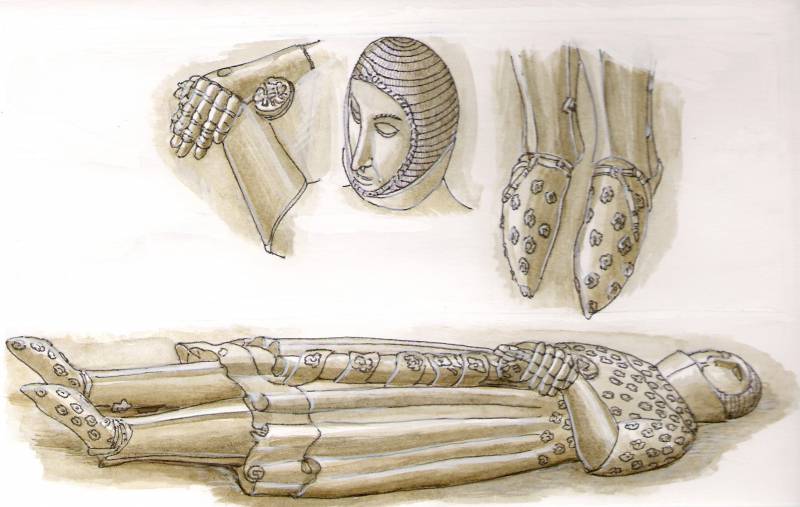
Detailing of the details of Don Alvaro de Cabrero the Younger effigy, made by the English historian David Nicol. Tinted A. Shepsa.
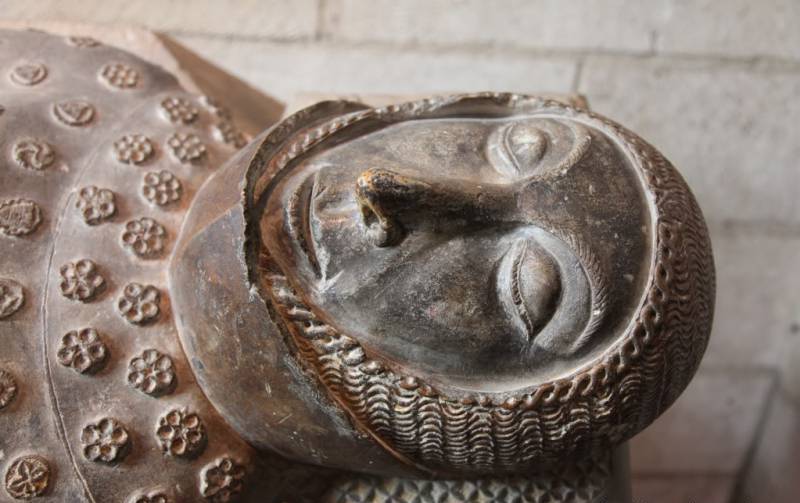
Well, nobody beat off his nose either, just as it was done with the effect of Carcassonne.
Well, later the skill of the sculptors increased even more, they began to use such a stone as alabaster and the quality of effigy in the 15th century reached its peak.
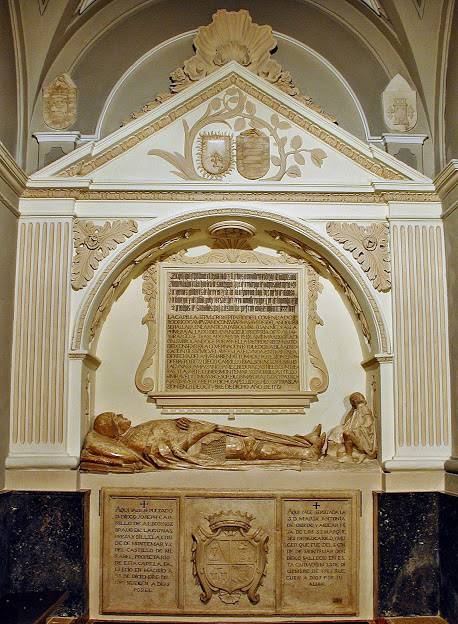
For example, in Guadalajara there is the church of St. Nicholas, where is the effigy of Don Rodrigo de Campusano (d. 1488?), The author of which was the sculptor Sebastian from Toledo. It is believed that today this sculpture is one of the most carefully executed works of this kind, characteristic of the end of the 15th century.
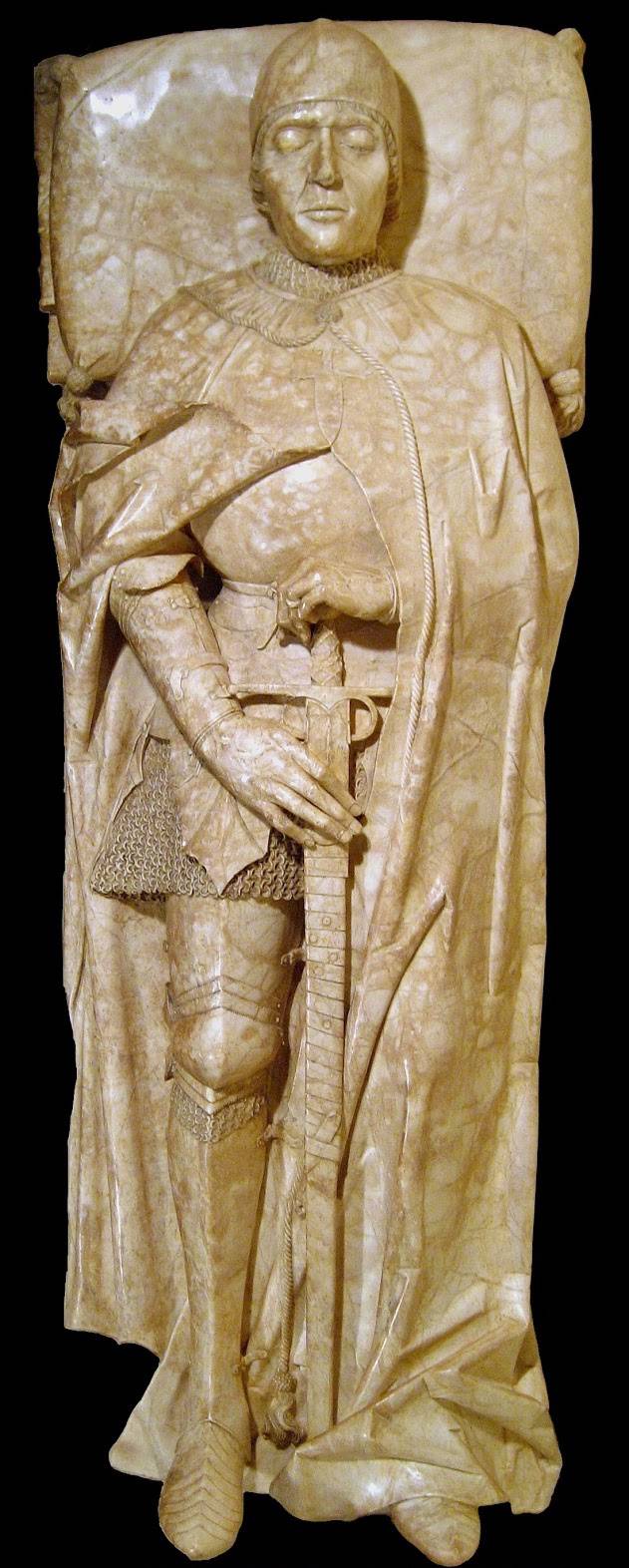
It is this that allows us to examine and evaluate clothes in detail. weapon Spanish knight of this time.
It is known that Don Rodrigo was a knight and commander of the Order of Santiago (as evidenced by the image of Santiago’s sword on his cloak), that is, a man obviously not poor, and what poor man could have ordered full knight armor at that time? Moreover, he was not only a good warrior, but also a literate and well-read man, and what they say is the thick folios depicted under the pillow on which his head rests.
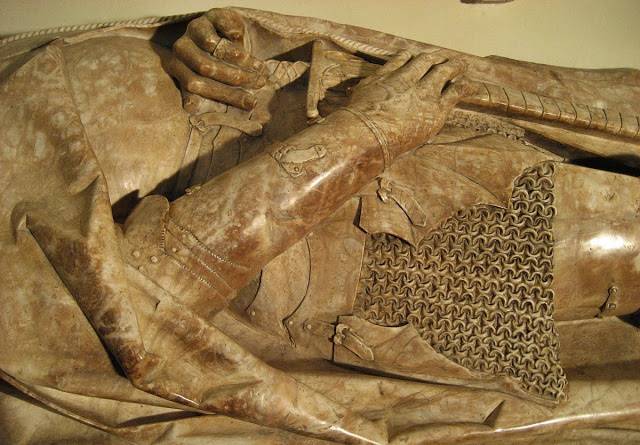
The armor in which Don Rodrigo is depicted is very interesting. Well, first of all, for some reason there is a chain mail collar in them, although it is completely unnecessary if it is worn with a chin. Globular type breastplate, typical for milanese armor, but small hanging lanceolate thigh shields - tassets, more in line with German armor. Truly, the chain mail, carved from alabaster, looks amazing too!
The famous effect of Richard Beauchamp, Earl of Warwick in the Church of Sts. Mary in Warwick with tassets similar to those we see on don Rodrigo effect. True, Don Rodrigo is smaller in size.
Interestingly, his armor is in some way similar to the armor, depicted, for example, on the bracelet (memorial plaque) of Sir John le Strange from Hillingdon (Middlesex), 1509, or John Leventorp from the abbey of St.. Helena in London, who died a year later. Since the armor served its owners for many years, more later in this case, the image does not mean anything, because 17 years is not a very long time for knightly weapons. Similar sashes above the chainmail skirt are seen in Sir Humphrey Stanley in Westminster Abbey, who died in the year 1505. That is, it can be conclusively argued that at the end of the 16th century, such a design of armor was fairly widespread in both Spain and England, although it should be considered less perfect than armor having a “skirt” not of chain mail, even with with metal bands in the shape of a bell. Although, on the other hand, it was more likely that it was more comfortable to sit in the saddle in the “skirt” of chain mail!

Bras John Leventorp, 1510, the Abbey of St.. Helena, London.

Bras Henry Stanley Henry, 1528 Hillingdon, Middlesex.
Surprisingly, even Ralph Werney, who died in 1547, wore an armor with a chain mail skirt and lanceolate tassets, the memorial plaque today in Oldbury (Hardfordshire), however, since on it he wore a heraldic cloak with wide sleeves over his armor, most of his armor he is just hiding. That is, don Rodrigo's armor should be considered very modern for 1488 of the year!
It is surprising that for some reason chainmail weaving hangs on the armor from under the kneecaps, and in the form of a narrow strip. These strips do not carry any protective functions here, but for some reason they have attached them. For beauty? But then they could be weighed! Incomprehensible detail ... Very interesting are double-wing tubular bracelets with well-visible loops, which in this case are “locked” not with hooks and pins, but pulled together with leather straps with buckles riveted to the halves of the braces!
Finally, the sword with the “ring” on the crosshair is also very interesting. It was necessary to protect the index finger, which at that time, according to the Mauritanian custom, many knights began to lay behind the crosshair of ricasso. It is believed that this helped to better control the sword, but during the era of the crusades Osama ibn Munkyz, calling this method "Persian", wrote in his memoirs that, seeing with whom you fight, you must first hit his blade at the base of the blade of the enemy and cut off him a finger, and only then cut his head off! The method itself, however, got accustomed, spread among the Moors, and then Christians, well, and as a way to protect the index finger, this ring was invented.
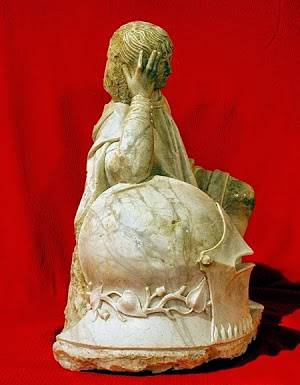
The helmet is at the knight's feet, and during the restoration of effigia he was able to be well viewed from all sides. Visibly passing through the dome of the helmet and the visor has a well-pronounced rib and viewing slot in the form of a single slot, as well as the back plate. That is, apparently, this is a salad (or sallet), with a visor in French fashion.
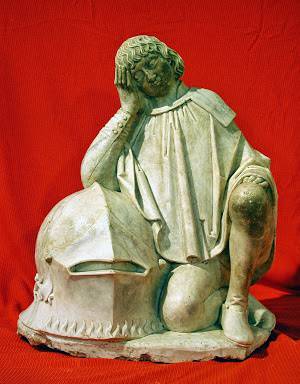
Helmet, front view.
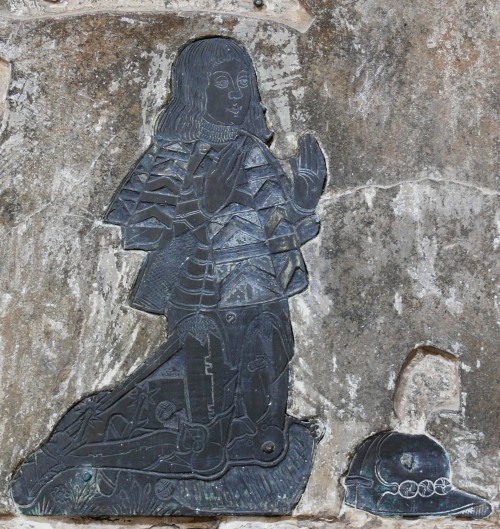
And what is interesting, in England was found a tombstone (bras) of very good preservation, belonging to William de Gray, 1495 g., Merton, Norfolk, on which he is depicted in tabar, a chain mail shirt with teeth and exactly the same helmet as at Don Rodrigo. Moreover, in the Church of St. Martin in Salamanca there is the effect of Diego de Santiestivana, dated 1483 year, and dressed in armor very similar to the armor of Don Rodrigo. They are exactly the same taset and finely reproduced chain mail in stone!
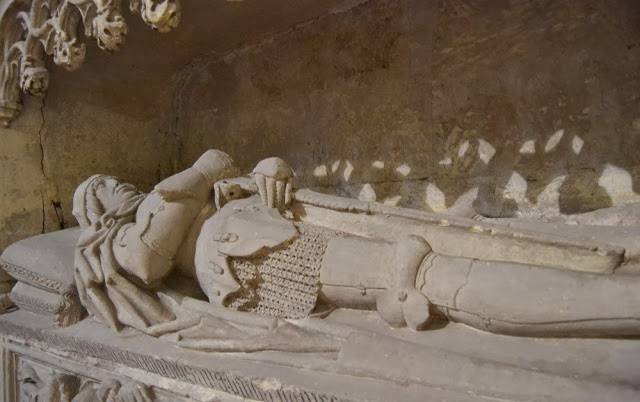
Effigia Diego de Santiestivana, 1483
That is, it was a whole direction in the knightly fashion, and the direction covering a long period of time and sufficiently international, since we find very similar armor on effigii from Spain and on the bras in England.
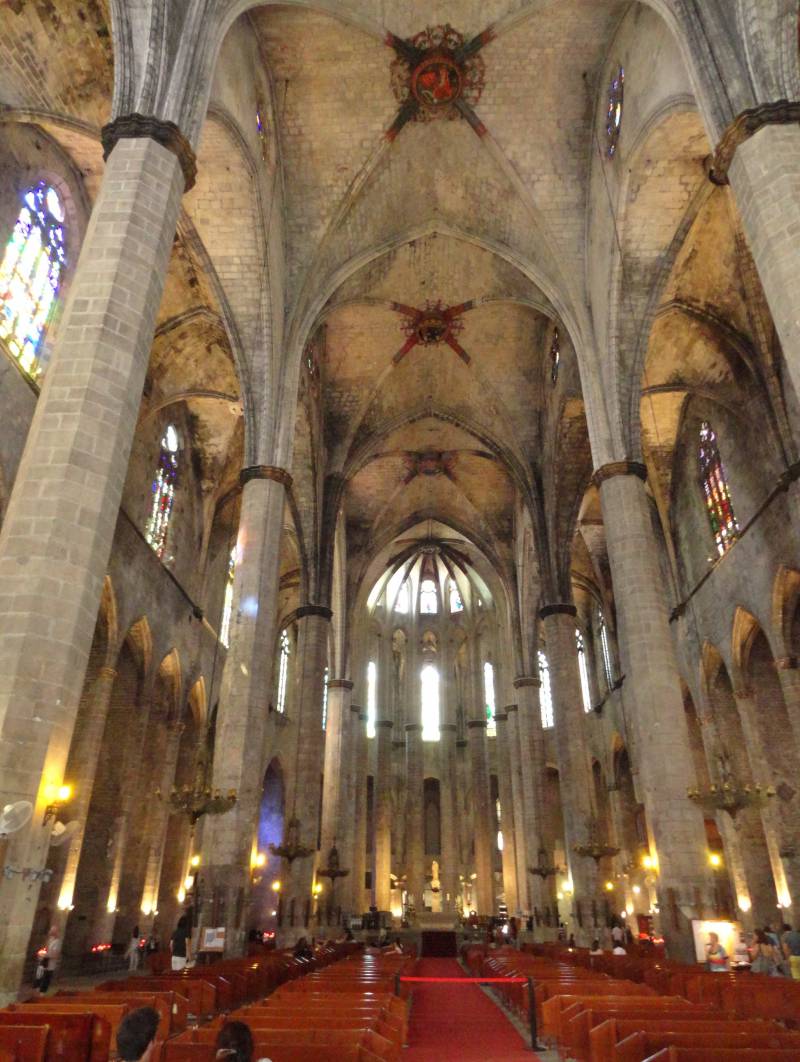
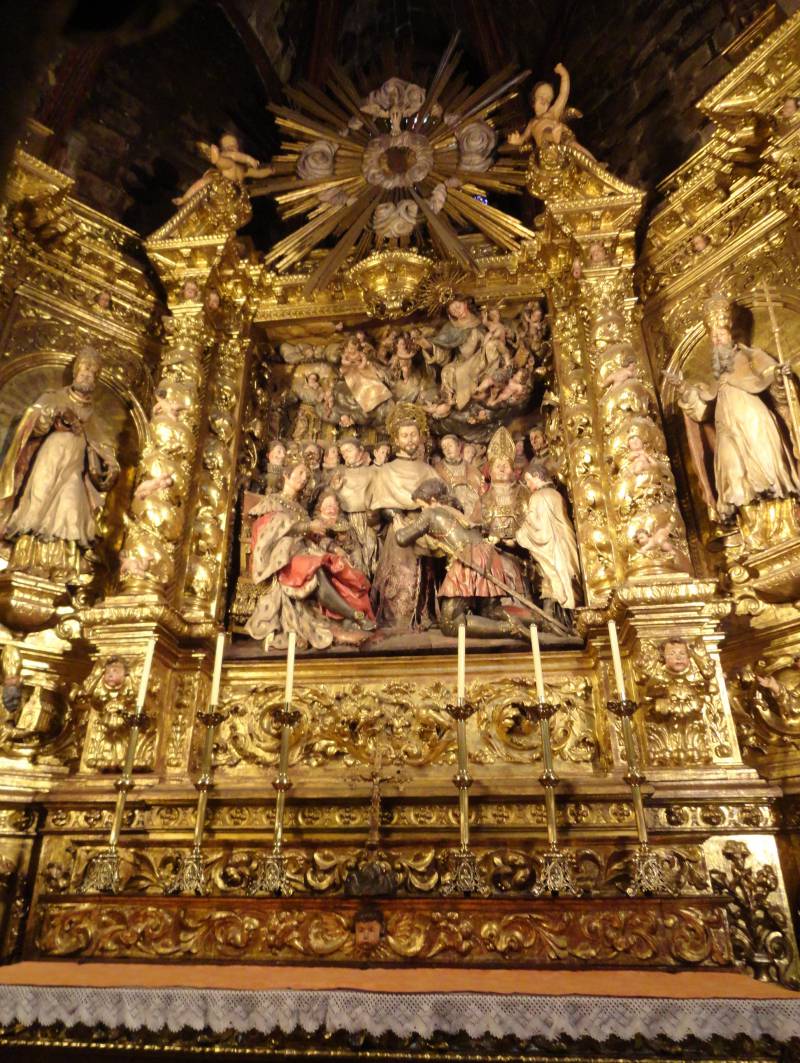
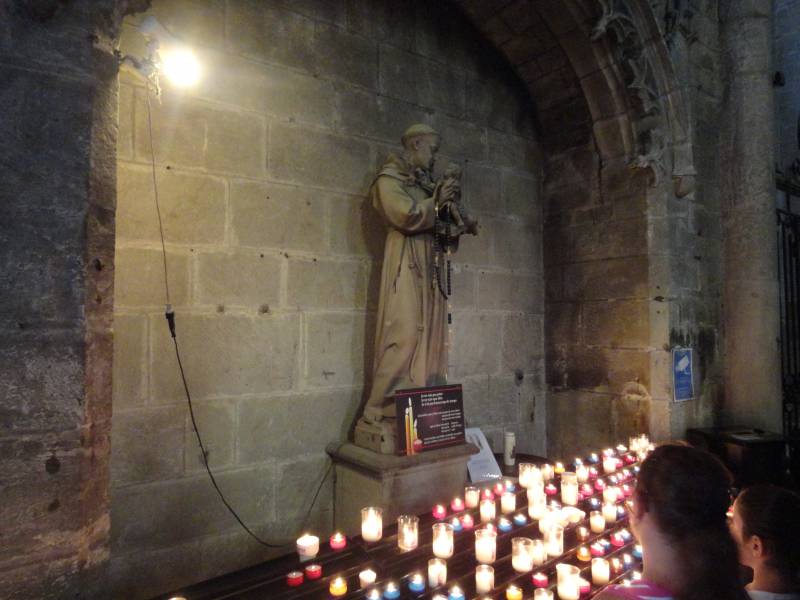
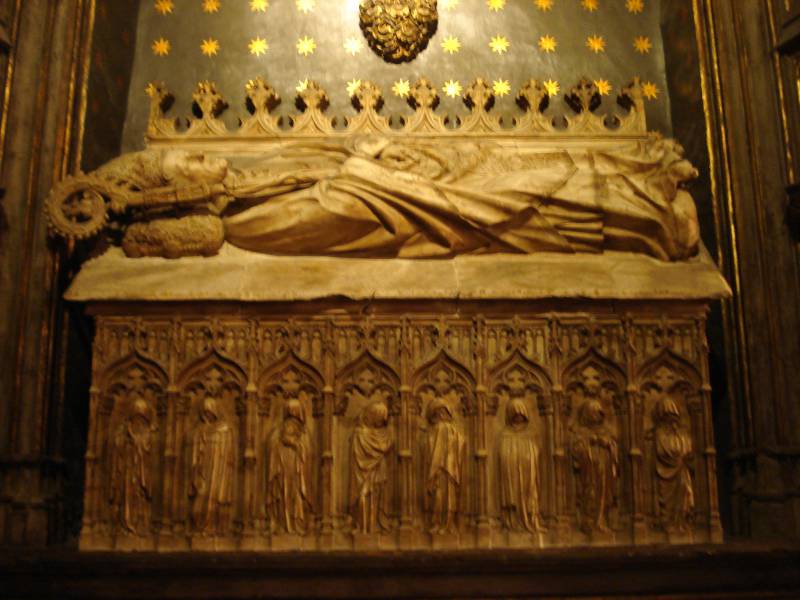

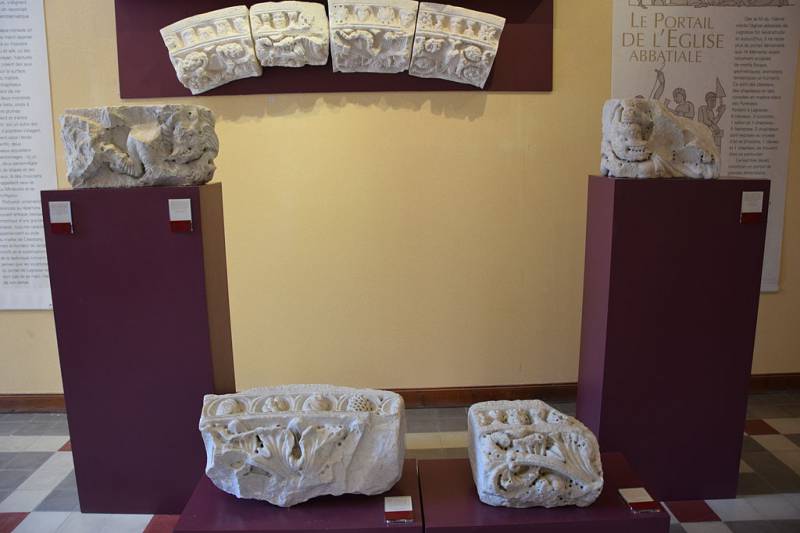
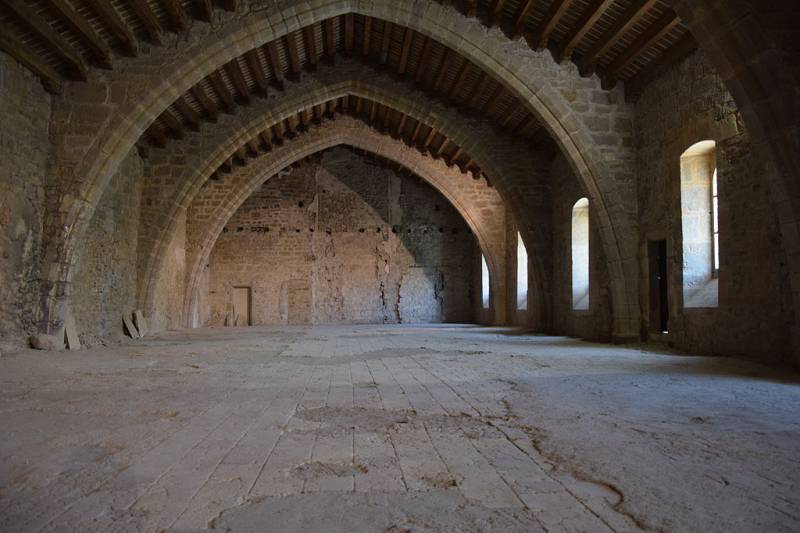
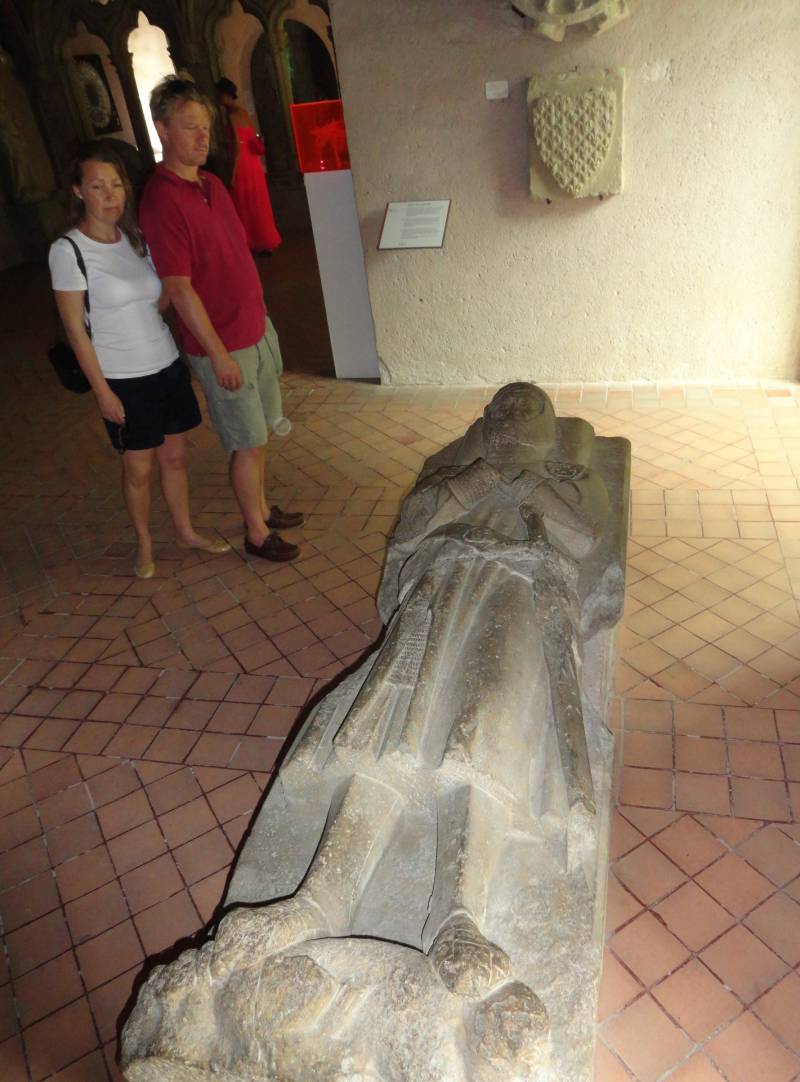
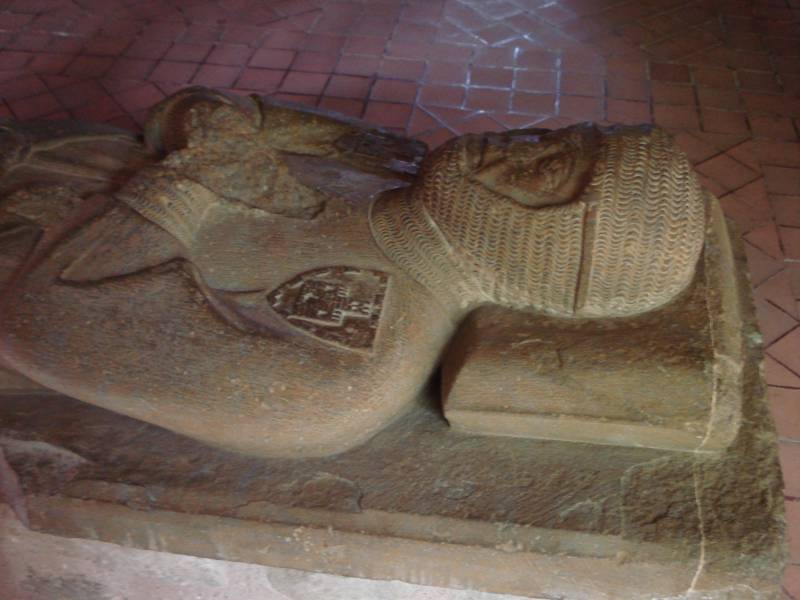
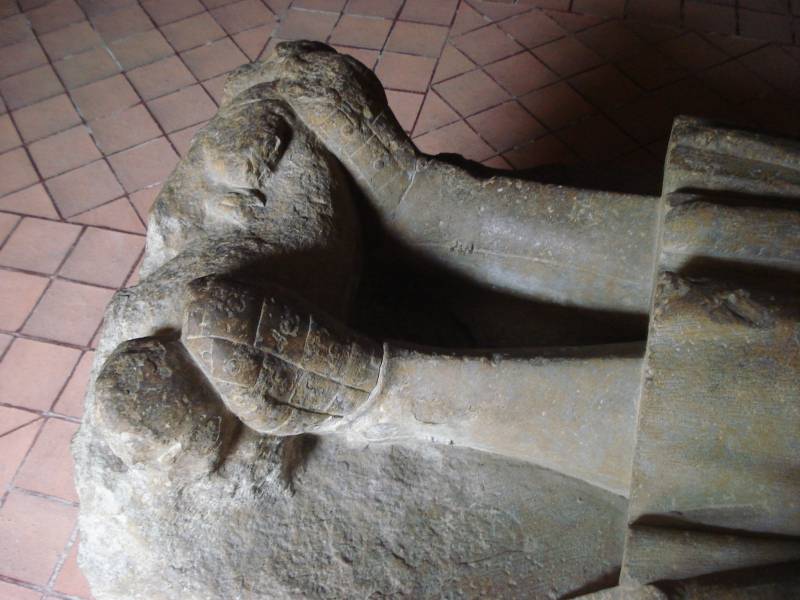
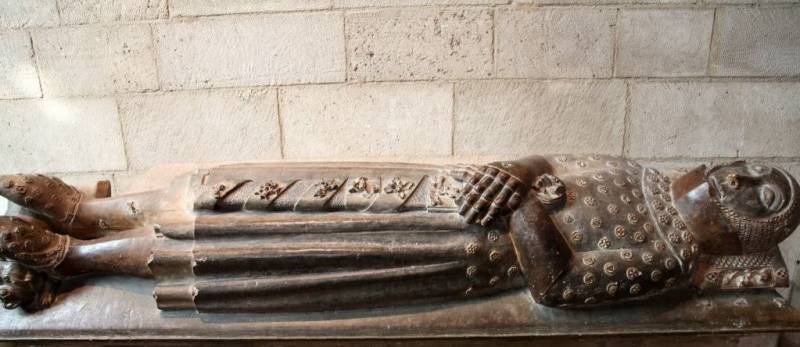
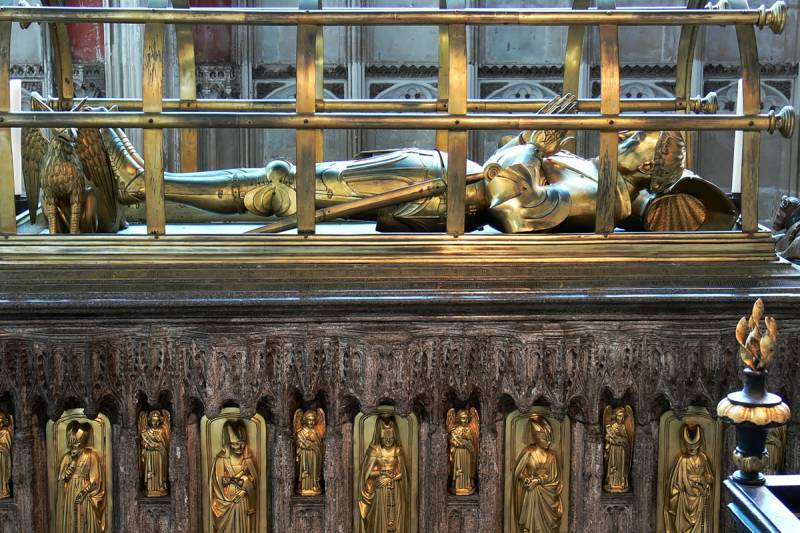
Information